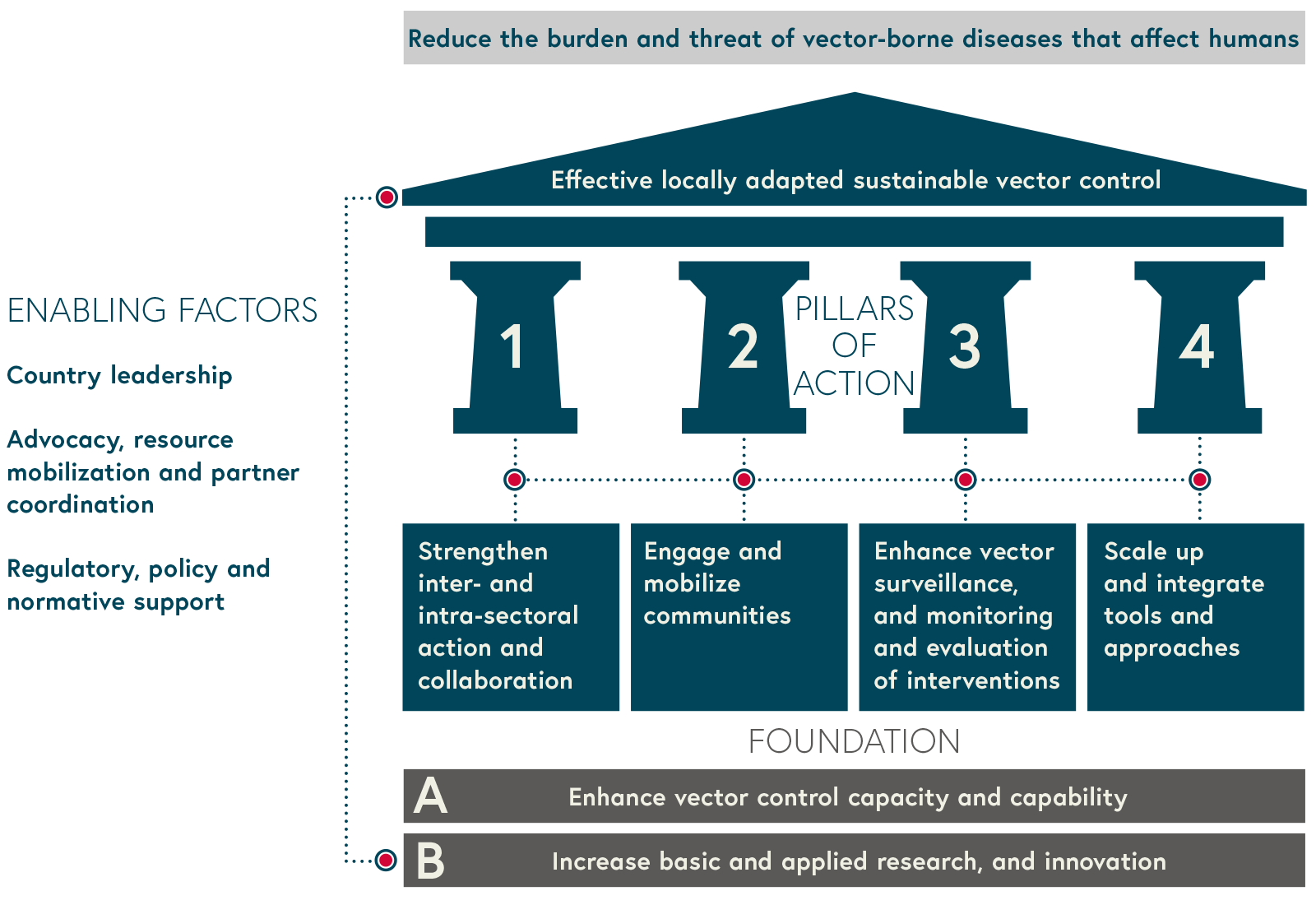INSECTICIDE RESISTANCE MANAGEMENT FROM THEORY TO PRACTICE
3.6
A systems approach to vector control
Never has the need for a comprehensive approach to vector control to counter the impact of vector-borne diseases (VBDs) been more urgent.
The unprecedented global spread of dengue and chikungunya viruses, as well as outbreaks of Zika and yellow fever since 2016, clearly highlight the challenges.
Integrated Vector Management
Integrated Vector Management (IVM) is a “rational decision-making process for the optimal use of resources for vector control”. IVM does this by making vector control more efficient, cost-effective, ecologically sound, and sustainable. IVM requires strong political support and commitment from central governments to succeed and, in particular, to foster intra- and inter-sectoral collaboration.
IVM is a management system which is flexible and can adapt to local conditions. IVM should follow a cyclical process with multiple rounds of situational analysis, planning, design, implementation, monitoring and evaluation.
A comprehensive assessment of the disease situation is essential to tailor the IVM programme to the situational context of the country or region. This should include epidemiological and entomological assessment, identification of local determinants of disease and stratification of areas at risk. On the basis of this assessment, plus knowledge of the efficacy of vector control methods, insecticide resistance status, and cost effectiveness, vector control interventions should be selected. Needs and resources should be mapped out and implementation strategies planned.
Finally, the programme should be monitored and evaluated to determine the effect on the disease of interest and to allow feedback on programme performance to influence future planning and implementation.
The Global Vector Control Response
Due to the significant threats from emerging and re-emerging vector-borne diseases, WHO developed a Global Vector Control Response 2017-2030 (GVCR), as a new advocacy strategy to strengthen vector control worldwide. Countries are called upon to update and harmonise their national vector control strategic plans in line with this generic framework. GVCR builds on the basic concept of IVM with renewed focus on improved human capacity and skills at national and subnational levels. In 2017, the World Health Assembly endorsed and adopted the GVCR.
The GVCR aims to reduce the burden and threat of vector-borne diseases that affect humans, through effective, locally adapted sustainable vector control. GVCR strives to achieve this goal, based upon two primary foundations and four pillars of action, which are all enabled by three primary factors. These are outlined below and summarised in Figure 1.
The GVCR acknowledges that effective locally-adaptive and sustainable vector control will be achieved by strengthening inter- and intra-sectoral collaboration, involving all constituencies in a social movement (public, private civil society, religious leaders, traditional leaders, academia, etc.) to fight VBDs.
Figure 1: Global Vector Control Response Framework (2017-2030)
[ Image adapted from Global vector control response 2017-2030. Geneva: World Health Organization (see References below).
Image adapted from Global vector control response 2017-2030. Geneva: World Health Organization (see References below).
The GVCR provides strategic guidance to countries and development partners to urgently strengthen vector control as a fundamental approach to preventing diseases and responding to outbreaks. To achieve this, re-alignment of vector control programmes is required, supported by increased technical capacity, strengthened monitoring and surveillance systems, and improved infrastructure. Ultimately, this will support implementation of a comprehensive approach to vector control that will enable the achievement of disease-specific national and global goals. It will also contribute towards the achievement of the United Nations Sustainable Development Goals.
Engagement
Engaging local authorities and communities as part of broad-based intersectoral collaboration will be key to improved vector control delivery, through tailoring of interventions to specific scenarios as informed by local entomological and epidemiological data. Building sustainable control programmes that are resilient in the face of technical, operational, and financial challenges will also require the engagement and collaboration of local communities.
Re-alignment of national programmes to optimise implementation of interventions against multiple vectors and diseases will maximise the impact of available resources. Recent advances to modernise and develop new vector control and surveillance tools means that there has never been a better time to achieve this.
Author: Raman Velayudhan
References
Global vector control response 2017-2030. Geneva: World Health Organization; 2017. CC BY-NC-SA 3.0 IGO.
